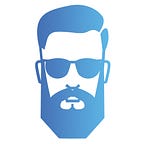BY TIKUE ANAZODO ON NOVEMBER 19, 2015
In the 80’s and 90’s, companies like Oracle, PeopleSoft and SAP pioneered the enterprise software movement as we know it today by building on-premise software suites packed with features that aimed to solve most of the major problems encountered by employees in big and medium-sized companies around the world.
IT managers in charge of picking vendors for enterprise companies were primarily interested in raw product functionality and feature composition of enterprise products peddled by vendors and typically gave little thought to the ultimate end user experience of corporate employees. The best products were effectively the products with the most features.
There were no strong requirements around optimizing the user experience for the employees who spent 8 hours every day buried in these tools. There were no strong requirements around building collaborative environments within enterprise applications.
There were no requirements around supporting use on multiple devices, because n-screen consumption via portable smart devices was not a thing at the time. The idea was that enterprise applications would just get the job done. User guides were considered an optimal fix for bad user experience. Employees had not necessarily encountered better software, so in comparison to working purely offline on paper, these clunky software suites were still considered a better alternative.
Fast forward to 2014. Consumer software has worked its way into the lives of billions of people worldwide. The very same employees who use well designed consumer services like Evernote, Dropbox and Twitter at home have to go to their offices everyday to endure hours of torture by software that looks like this:
